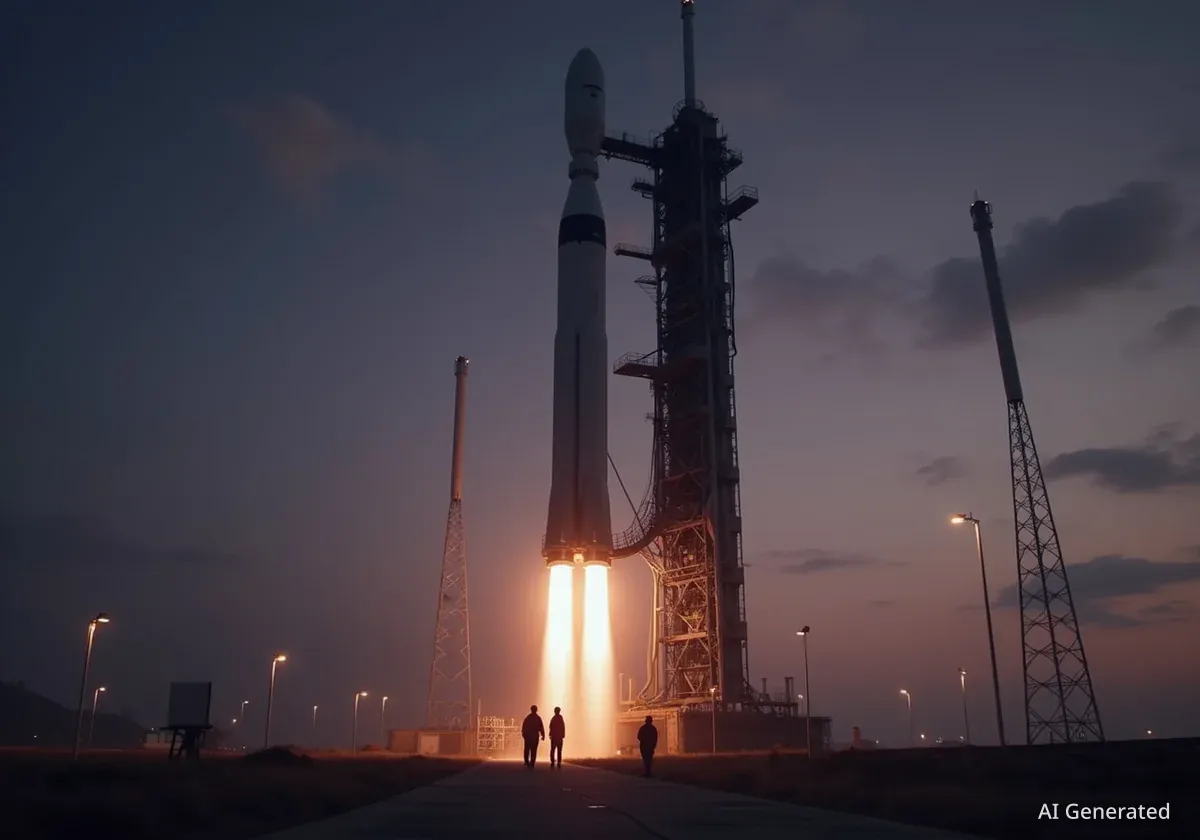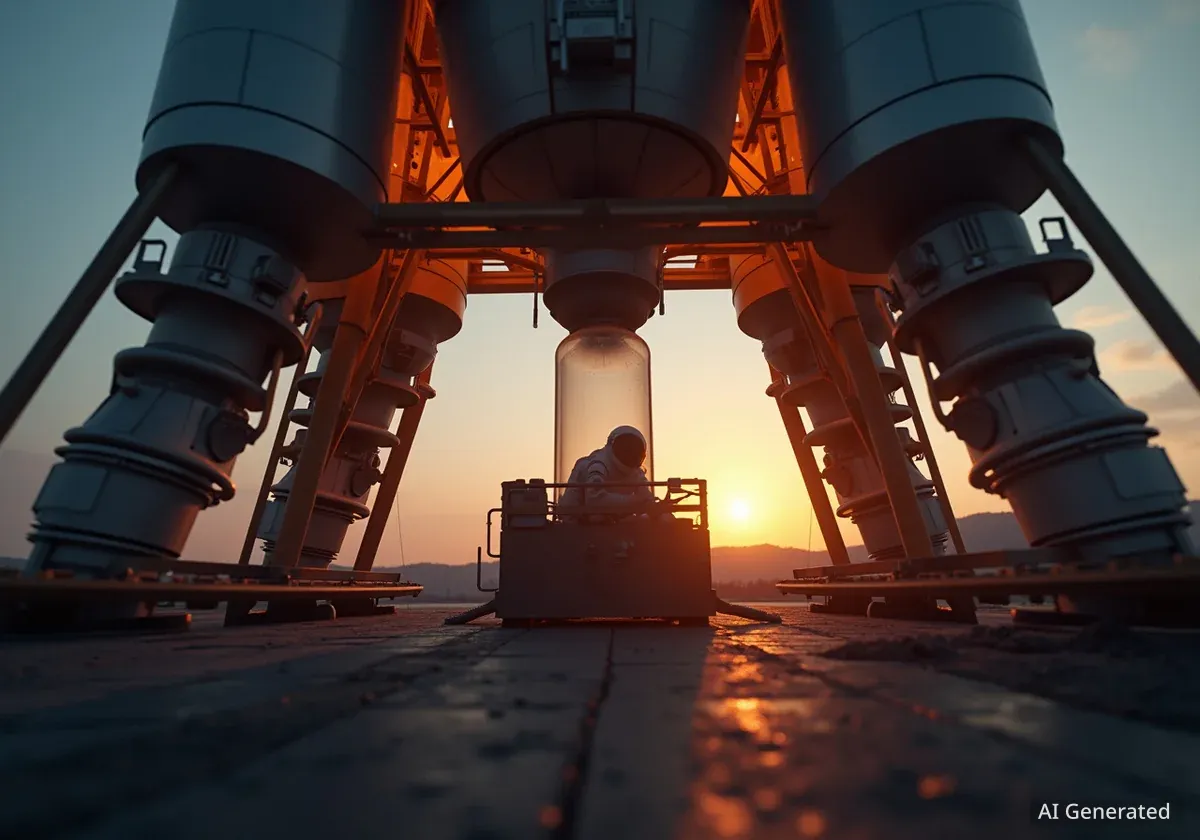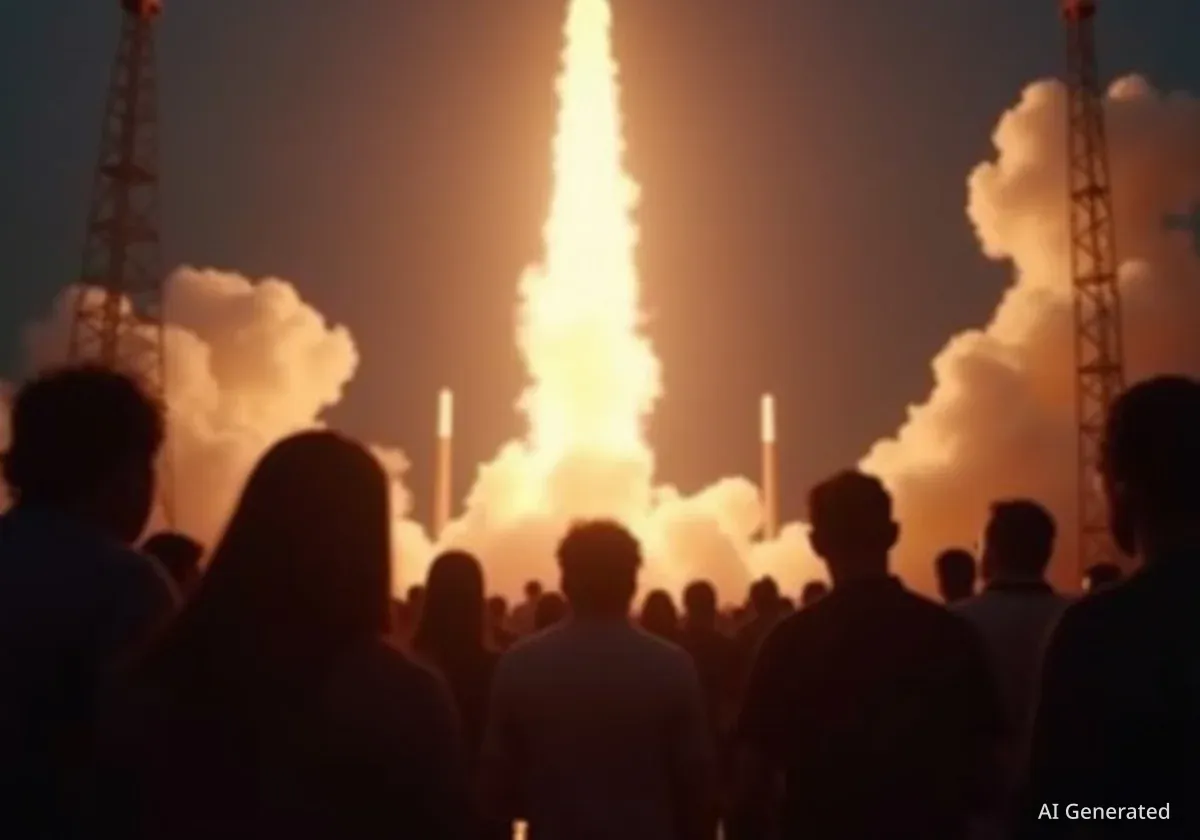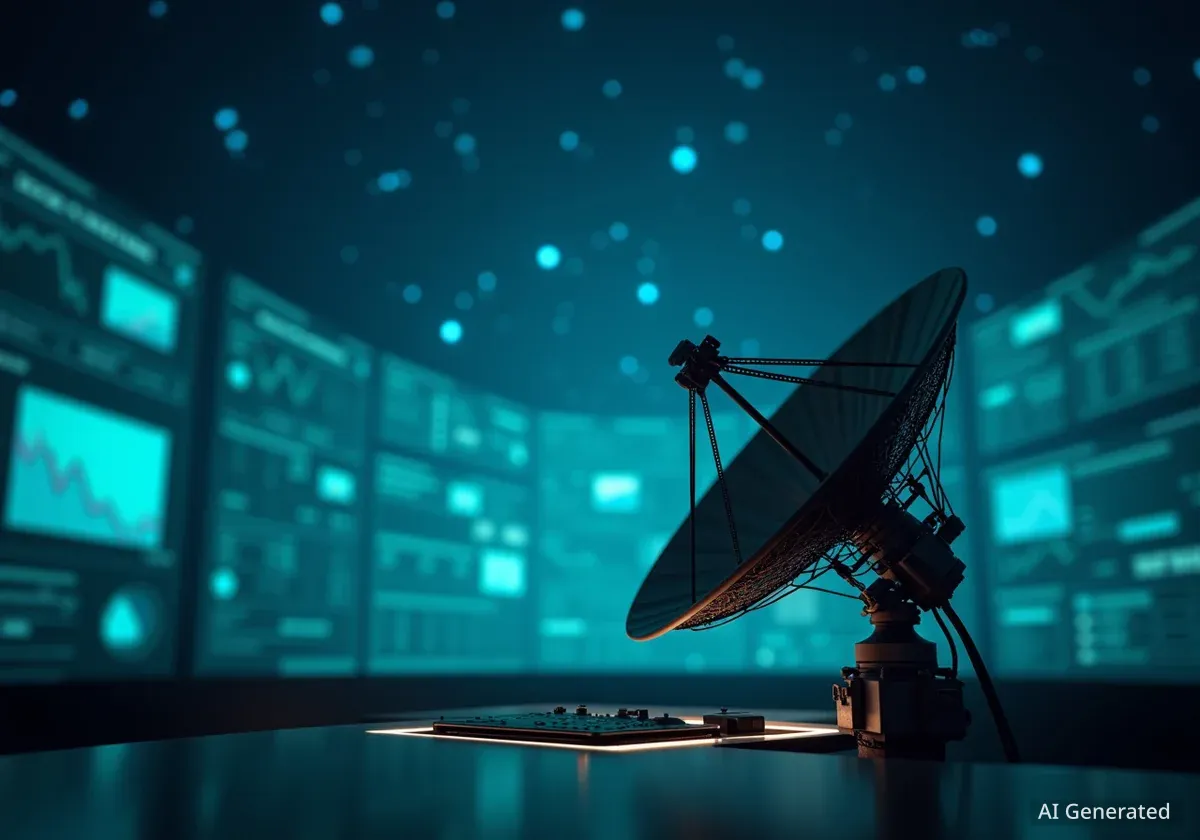China is preparing to launch its Shenzhou XXI mission, sending three astronauts to the Tiangong space station for a six-month stay. The launch is scheduled for Friday night from the Jiuquan Satellite Launch Center, marking the next phase in the country's ambitious space program and initiating a crew rotation aboard the orbital outpost.
The mission will be carried by a Long March 2F rocket, a workhorse of China's human spaceflight program. This flight underscores the continuous occupation and operational capability of the Tiangong station, which orbits approximately 400 kilometers above Earth.
Key Takeaways
- The Shenzhou XXI mission is scheduled to launch at 11:44 pm on Friday from the Jiuquan Satellite Launch Center.
- Three astronauts will travel to the Tiangong space station for a six-month tour of duty.
- The crew includes veteran astronaut Senior Colonel Zhang Lu and two first-time flyers, Major Wu Fei and Zhang Hongzhang.
- The mission will perform a crew handover with the current Shenzhou XX astronauts, who have been in orbit since late April.
The Shenzhou XXI Mission and Crew
Officials from the China Manned Space Agency confirmed the launch details during a press conference on Thursday morning. Preparations at the launch site in the Inner Mongolia autonomous region are in their final stages, with propellant fueling of the Long March 2F rocket set to begin later in the day. The launch is precisely timed for 11:44 pm local time.
The crew of Shenzhou XXI is a mix of experience and new talent. Leading the mission is Senior Colonel Zhang Lu, who is making his second trip to space. His first mission was the Shenzhou XV flight, from which he returned just 29 months ago. His experience will be critical in guiding the new crew members.
Joining him are two astronauts on their debut spaceflight:
- Major Wu Fei, serving as the spaceflight engineer.
- Zhang Hongzhang, the mission's payload specialist.
Their roles reflect the increasing complexity and scientific focus of missions aboard the Tiangong station. As a payload specialist, Zhang Hongzhang will be responsible for overseeing a range of scientific experiments during their stay.
A Rapid Journey to Orbit
Once the Shenzhou XXI spacecraft reaches its designated orbit, it will engage an autonomous rapid rendezvous-docking procedure. This process is expected to take approximately three and a half hours, allowing the crew to quickly and efficiently connect with the forward port of the Tianhe core module, the central hub of the Tiangong station.
Life Aboard the Tiangong Station
The primary objective for the Shenzhou XXI crew is the operation and maintenance of the Tiangong space station over their six-month tenure. This includes managing the station's systems, conducting scientific research, and performing spacewalks if required. The Tiangong, completed in late 2022, is a modular station consisting of three main components: the Tianhe core module and two laboratory modules, Wentian and Mengtian.
Tiangong: An Independent Outpost
The Tiangong space station is currently the only space station independently operated by a single nation. It orbits at an altitude of about 400 kilometers (approximately 250 miles), similar to the International Space Station. Its completion marked a significant milestone for China's space program.
The arrival of the new crew will initiate a brief but busy handover period. The Shenzhou XX astronauts—mission commander Senior Colonel Chen Dong, Colonel Chen Zhongrui, and Colonel Wang Jie—have been managing the station since their arrival in late April. They will spend several days briefing the incoming crew on the station's status and ongoing experiments before their own return to Earth.
This crew rotation model ensures that the station remains continuously staffed, allowing for uninterrupted scientific research and long-term studies on the effects of spaceflight on the human body.
China's Growing Presence in Space
The consistent cadence of crewed missions to Tiangong highlights China's strategic commitment to maintaining a long-term human presence in low-Earth orbit. The program is not only a symbol of national prestige but also a platform for scientific and technological advancement.
"After the Shenzhou XXI spacecraft enters its preset orbital position, it will activate the rapid autonomous rendezvous-docking mode and take about three and a half hours to approach and connect with the front port on the Tianhe core module," stated Zhang Jingbo, a spokesman for the China Manned Space Agency.
This capability for rapid docking demonstrates the maturity of China's rendezvous and navigation technology, which is crucial for efficient crew and cargo transfers. Each successful mission builds upon the last, refining procedures and expanding the scope of what can be accomplished in orbit.
The Tiangong station is planned to operate for at least a decade, with potential extensions. China has also expressed openness to international collaboration, inviting other countries to conduct experiments aboard the station. The successful launch and docking of Shenzhou XXI will be another step forward in establishing Tiangong as a key international platform for space-based research.
As the Shenzhou XX crew prepares to return home, the arrival of Zhang Lu and his team marks the beginning of a new chapter for the orbital laboratory, continuing the cycle of human exploration and scientific discovery in space.





